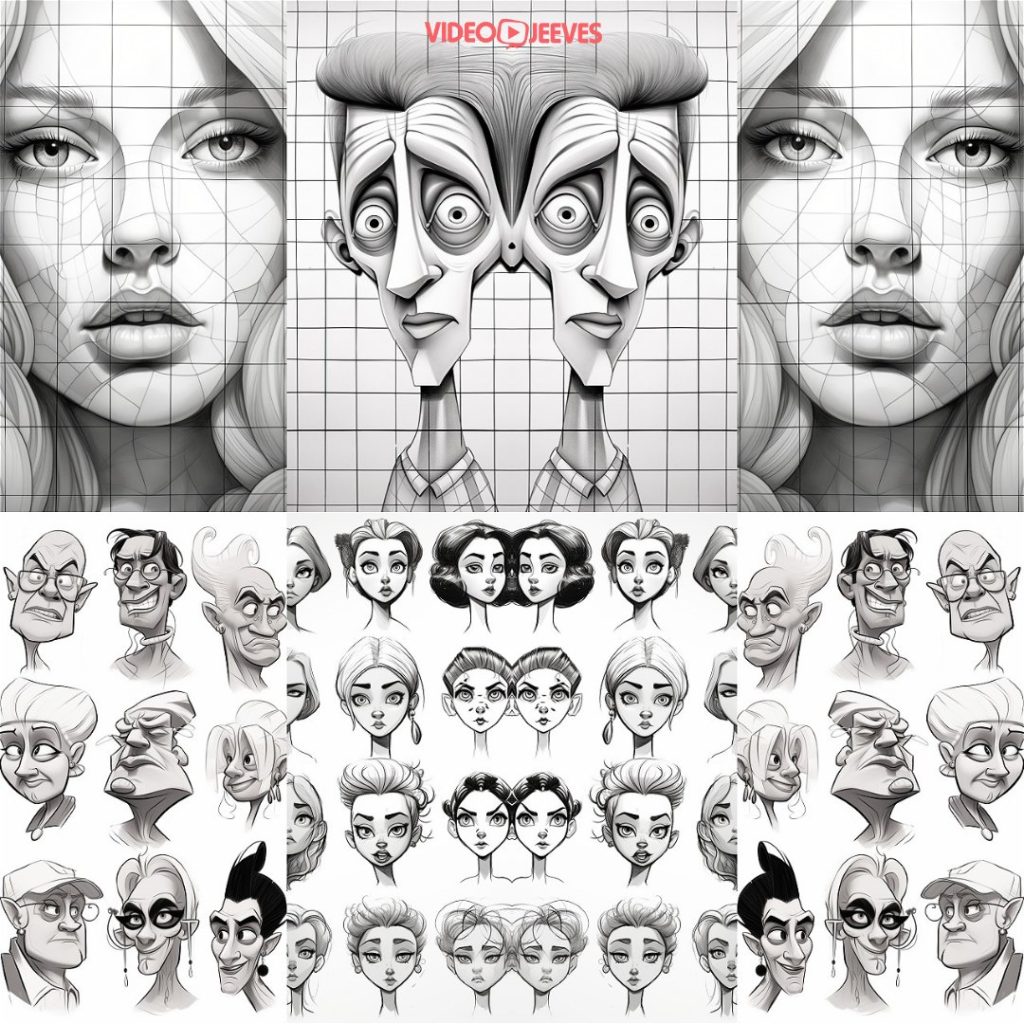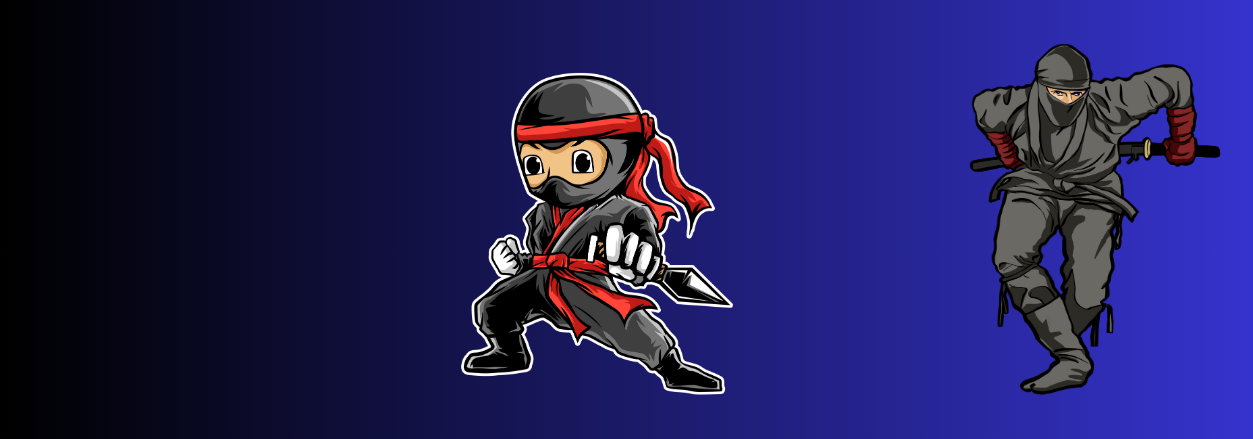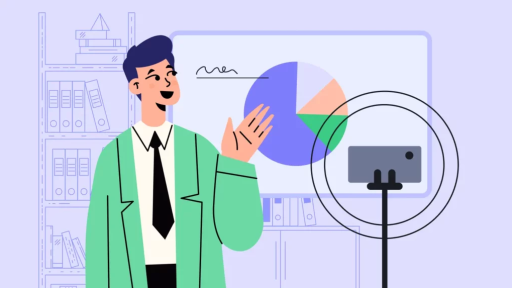Did you know that every iconic character, from Mickey Mouse to Pikachu, started as a simple sketch on a piece of paper?
Character design is the backbone of animation, video games, and storytelling, capturing imaginations and leaving lasting impressions.
Join us as we dive into the fascinating world of character design and explore the secrets behind creating unforgettable characters.
Table of Contents
What is Character Concept Art?
Character concept art is the creation of an artwork from scratch. Character design concept art captures the essence of a character through drawings and illustrations that reflect its personality.
Character design is not just about drawing a character; it’s about creating a visual representation of a personality, a story, and a world.
It’s the process of bringing imagination to life, giving form to ideas, and making characters relatable and memorable.
Through skillful design, artists can evoke emotions, convey narratives, and captivate audiences.
When you think of iconic characters like Mickey Mouse, Bugs Bunny, or SpongeBob SquarePants, what comes to mind?
Their distinct features, expressions, and personalities instantly spring to life, leaving an everlasting mark on pop culture.
This is the power of character design. It is the ability to create characters that transcend time and resonate with people of all ages and all walks of life.
Tools You Need to Design Characters
Creating compelling characters requires a combination of artistic skill, creativity, and technical know-how.
While traditional tools like pencils and paper are still widely used in the initial stages of character design, digital software has revolutionized the process.
Offering artists a wide range of tools and capabilities to bring their visions to life.
Digital software such as Adobe Illustrator, Procreate, and Autodesk Maya have become indispensable tools for character designers, allowing them to sketch, paint, and animate their creations with precision and ease.
These programs offer a multitude of features. From customizable brushes and color palettes to advanced 3D modeling and animation tools, empowering artists to explore new possibilities and push the boundaries of their creativity.

The “How To” of Character Design
Character design is the backbone!
Whether you’re designing a hero, a villain, or a sidekick, always keep the story in mind.
Consider the characters’ role within the narrative, their motivations, and how their design can enhance the overall storytelling experience.
Here is how you can start conceptualizing and designing your character.
Research
This is the first step.
Before you get your hands on a stylus, do your research.
Study the references well
Collecting the references is part of your research. The reference images can help you find elements including colors, patterns, and textures.
You can then incorporate them into your character’s design.
Get to know your audience
You must know about your audience. By keeping your preferred audience in mind, you will design characters in a better way to resonate with them.
Defining non-visual characteristics
The character designers develop a personality and background story from the design brief.
By doing a few rough concept sketches they add multiple layers of both, physical and emotional characteristics.
Choosing a color palette
Include a palette of supporting colors for the character.
It evokes different emotions and communicates information about the character’s traits.
Drawing
Begin to create detailed sketches of your character!
You will need to draw them from multiple angles and then seek feedback from others. This way you will discover new ideas and it will help you to refine your designing skills.

Is Design Iteration Important?
Immerse yourself in inspiration!
The key to creating compelling characters is to draw inspiration from the world around you.
Explore different art styles, study anatomy, and observe people’s mannerisms and expressions. The more you immerse yourself in the world of art and storytelling, the richer your creations will become.
Character design is a process of exploration and iteration. Don’t be afraid to experiment with different ideas and concepts, and don’t be discouraged by setbacks or failures.
The best characters often emerge through a process of trial and error, with each iteration bringing you closer to your vision.
The Evolution of Character Design
Over the years, character design has evolved significantly, reflecting changes in technology, culture, and audience preferences.
From the simplistic, hand-drawn characters of early animation to the intricate, digitally rendered creations of today, character design continues to push the boundaries of imagination and creativity.
One notable example of this evolution is the transition from 2D to 3D character design.
New Possibilities for Portraying Visuals
With the advent of computer-generated imagery (CGI) and the creation of still or animated visual content using imaging software, artists gained the ability to create characters with greater depth, detail, and realism than ever before.
This shift opened up new possibilities for storytelling and visual expression.
It allows characters to inhabit fully realized worlds and interact with their environments in ways previously unimaginable.
Another trend in character design is the rise of diversity and representation.
As audiences become more diverse and inclusive, creators are increasingly embracing characters from different backgrounds, cultures, and perspectives.
This shift not only reflects the world we live in but also helps to create richer, more nuanced stories that resonate with a wider range of viewers.
Character Design in Film and Games
Character design plays a pivotal role in both film and video games.
It shapes the visual identity of stories and immerses audiences in captivating worlds. In film, character design brings scripts to life, allowing filmmakers to breathe personality into their characters.
From animated classics to epic blockbusters, characters are often the heart and soul of cinematic experiences. It leaves a lasting impression long after the credits roll.
In the realm of video games, character design takes on a whole new dimension.
Game designers craft characters that not only look appealing but also feel responsive and dynamic.
It enhances the player’s immersion and engagement. Whether exploring vast open worlds or engaging in intense multiplayer battles, characters are the driving force behind players’ experiences.

A Collaborative Process of Bringing Characters to Life
In both mediums, character design is a collaborative process that involves artists, writers, animators, and developers working together to bring characters to life. From initial concept sketches to final renders, every detail is carefully considered.
The designers ensure that characters resonate with audiences and serve the main narrative.
Whether it’s the expressive faces of Pixar’s animated heroes or the intricate armor of a warrior in a fantasy epic, character design elevates storytelling and creates memorable experiences that stand the test of time.
The Elements of Good Character Design
Good character design goes beyond just creating visually appealing characters.
It encompasses a range of elements that contribute to their effectiveness and impact.
Here are some key components of good character design.
Match the style and tone
A well-designed character should be easily distinguishable from others.
It must possess unique features, proportions, and traits that set them apart. Whether it’s through iconic costumes, distinct silhouettes, or memorable facial expressions, the character must match the style and tone of the production.
Personality
Characters should have depth and personality that shine through their design. Whether they are heroic, villainous, or somewhere in between, their appearance, gestures, and expressions should reflect their traits and motivations.
From subtle distinctions to bold gestures, personality infuses characters with life and makes them relatable to audiences.
Functionality
In the context of games, characters need to be designed with functionality in mind.
This includes considerations such as movement, interaction with the environment, and gameplay mechanics.
A character design should support the abilities and actions, ensuring a seamless and intuitive experience for players.
Versatility
Characters designed for storytelling purposes should be versatile enough to convey a range of emotions and actions.
Whether they’re engaged in a fierce battle, sharing a tender moment, or experiencing comedic mishaps, characters should be able to express themselves convincingly across different situations and scenarios.
Consistency
Consistency is crucial for maintaining believability and immersion within a fictional world.
Characters should follow the established design principles and remain consistent in their appearance and behavior throughout the narrative.
This includes factors such as color schemes, clothing styles, and physical attributes.
Adding a unique element
Truly memorable characters often possess iconic traits or symbols that instantly evoke their identity.
Whether it’s Mickey Mouse’s ears, Superman’s cape, or Pikachu’s lightning bolt tail, these iconic elements become synonymous with the character and contribute to their recognizability and longevity.
Overall, good character design is a delicate balance of creativity, functionality, and storytelling prowess.
By considering these elements and striving for excellence in execution, designers can create characters that resonate with audiences and stand the test of time.
Conclusion
In conclusion, character design is a dynamic and complex art form that lies at the heart of animation, video games, and storytelling.
It’s a journey of creativity, exploration, and imagination where artists have the power to bring new worlds and unforgettable characters to life. By mastering the art of character design, you can leave a lasting legacy in the world of entertainment.
Overall, good character design is a delicate balance of creativity, functionality, and storytelling prowess. By considering these elements and striving for excellence in execution, designers can create characters that resonate with audiences and stand the test of time.
We have also discussed how character design is utilized in film and games. This blog has highlighted its importance in shaping visual narratives and engaging audiences on a deeper level.
Whether it’s through iconic heroes or villains, character design is the driving force behind some of the most beloved stories in entertainment history.
So, pick up your pencil, get your tablet, and begin drawing your next character.







